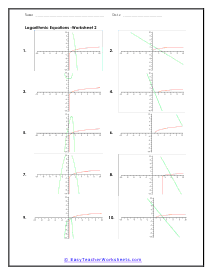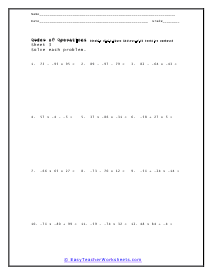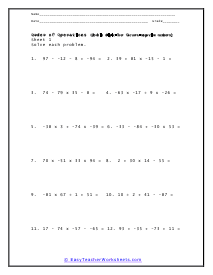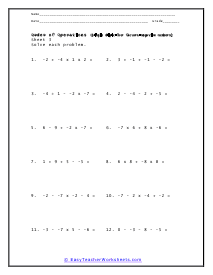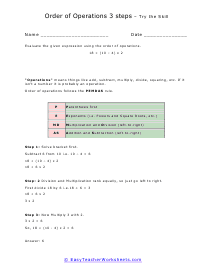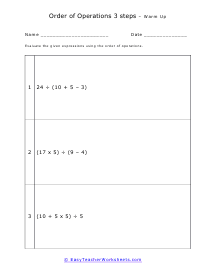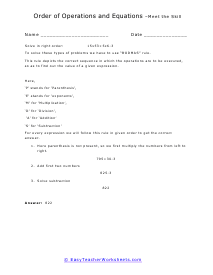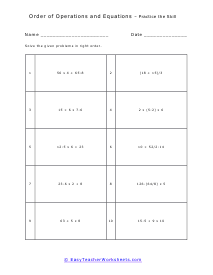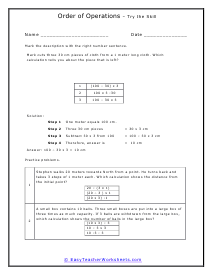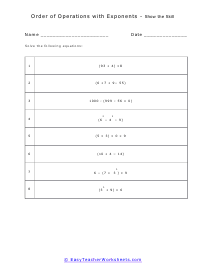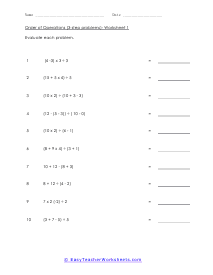When you are performing mathematical calculations, there are a few things you must keep in mind. For starters, the order of operations through which you'll solve problems is crucial to understand. But when does such an instance happen? It's when you have a problem that requires multiple operations, such as 4+2×3. Now, the confusion arises whether you want to perform addition first, then multiplication, or vice versa. The answer is simple, and we'll follow the order rule known as PEMDAS. PEMDAS stands for "Parentheses, Exponents, Multiplication, Division, Addition, and Subtraction," and it has a mnemonic phrase "Please Excuse My Dear Aunt Sally," for better understanding. Let's solve an example to get a better understanding. 4 + (2 + 1)2, 4 + (3)2, 4 + 9 = 13.
Your students will use these worksheets to review how to apply the proper order of operations for equations containing multiple operators. When you run into a problem that contains multiple operations in the same mathematical statement, we have to follow a consistent order in which we process each operation. It will almost always change the final outcome based on if you process the sum, difference, product, or quotient first or last. For example, if you were confronted with the problem: 3 + 6 × 4 ÷ 2. If you were to process the operations in order (addition, multiplication, and finally division) you answer would be 18. If you were to go right to left (division, multiplication, and finally addition) you would end up with an answer of 15. If you were to use basic PEMDAS we would process (multiplication first, division second, and end with addition) our final answer would be 15 as well. Please note that in terms of PEMDAS multiplication and division are at the same level so in the example we would process the mix of multiplication and division left to right. We can easily see that these facts can become very confusing for young learners.




